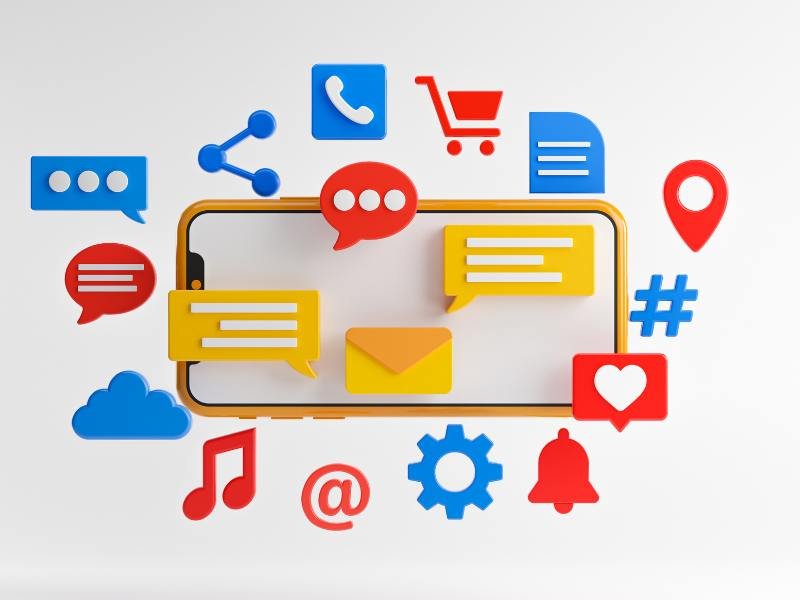
Which Social Media Platform is Best for Marketing in 2025?
In the ever-evolving landscape of digital marketing, choosing the right social media platform can make or break your marketing strategy. As of 2025, the decision hinges on several factors: your audience demographics, content type, business goals, and budget. Let’s explore the leading social media platforms and their potential to drive marketing success.

1. Facebook
Best For: Broad reach, community building, and advertising.
Why Facebook?
Despite debates about its decline among younger users, Facebook remains a powerhouse with over 2.9 billion monthly active users. It’s ideal for targeting diverse demographics through advanced ad tools, including interest-based targeting and detailed analytics.
Marketing Strategy Tips:
– Leverage groups to build brand loyalty.
– Invest in Facebook Ads for high ROI, particularly for businesses catering to middle-aged and older demographics.
2. Instagram
Best For: Visual content, influencer collaborations, and product showcases.
Why Instagram?
As a hub for younger audiences, Instagram thrives on visual engagement. With features like Stories, Reels, and Shopping, it’s perfect for brands focusing on aesthetics and interactive storytelling.
Marketing Strategy Tips:
– Use Reels for bite-sized, engaging video content.
– Partner with influencers to boost credibility.
– Optimize your Instagram Shop for seamless shopping experiences.
3. TikTok
Best For: Short-form video content, trend-driven campaigns, and Gen Z engagement.
Why TikTok?
TikTok’s algorithm excels at viral content discovery. Its dominance in the 18-34 demographic makes it essential for brands aiming to connect with younger audiences through authentic and creative content.
Marketing Strategy Tips:
– Hop on trending challenges to increase visibility.
– Invest in TikTok ads, which blend naturally into the user experience.
– Encourage user-generated content to foster brand engagement.
4. LinkedIn
Best For: B2B marketing, professional networking, and thought leadership.
Why LinkedIn?
LinkedIn is the go-to platform for targeting professionals, executives, and decision-makers. Its robust tools for organic reach and lead generation make it invaluable for B2B marketers.
Marketing Strategy Tips:
– Share industry insights and case studies to establish authority.
– Use LinkedIn Ads to target specific job roles and industries.
– Build personal and company pages that reflect your expertise.
5. YouTube
Best For: Long-form video content, educational material, and product tutorials.
Why YouTube?
With over 2 billion logged-in monthly users, YouTube is a search engine powerhouse. It’s ideal for creating evergreen content that educates, entertains, and informs.
Marketing Strategy Tips:
– Invest in SEO to make your videos discoverable.
– Create how-to guides and product reviews.
– Use YouTube Ads to reach highly engaged audiences.
Conclusion
Know Your Audience: Match your platform to where your target demographic spends their time.
Focus on Content: Adapt your content style—whether short-form video, long-form articles, or visuals—to the platform’s strengths.
Diversify: Avoid putting all your eggs in one basket. Combine platforms for a multi-channel approach that boosts visibility and engagement.
Marketing success in 2025 isn’t about chasing trends but aligning your strategy with platforms that complement your brand’s voice and objectives. With careful planning, any of these platforms can be a cornerstone of your marketing strategy.
Frequently Asked Questions (FAQs)
1. How do I decide which social media platform is right for my business?
Start by understanding your target audience’s demographics, preferences, and online behavior. Then match your content type and business goals to the platform best suited for those users (eg: Instagram for visual content, LinkedIn for B2B).
2. Is it better to focus on one platform or use multiple?
A multi-platform approach often works best to increase reach and diversify risk. However, focus more energy on platforms where your audience is most active and where your content performs well.
3. What platform is best for B2B marketing in 2025?
LinkedIn remains the top platform for B2B due to its professional network, job-targeted ad tools, and thought leadership content opportunities.
4. Are TikTok and Instagram still relevant for business marketing?
Absolutely. TikTok excels at short-form, viral content for Gen Z, while Instagram supports product discovery, influencer marketing, and visual storytelling for younger to mid-age audiences.
5. How can I measure success on each platform?
Use platform-specific analytics to track key metrics like engagement, reach, CTR, conversions and ROI. Define clear goals for each channel (eg: leads on LinkedIn, sales via Instagram Shop) to guide strategy and assess performance.


